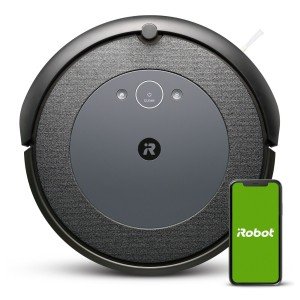Understanding Floor Robots: The Future of Home Cleaning
In current years, technological advancements have actually considerably changed the landscape of family cleaning. Among the most significant developments is the floor robot, a gadget that has actually rapidly gotten appeal for its benefit and performance. This article aims to check out the different aspects of floor robots, their functionality, advantages, popular models, and some frequently asked concerns to help consumers make notified choices.
What is a Floor Robot?
A floor robot, commonly described as a robotic vacuum, is an automated device developed to browse floorings and eliminate dirt, dust, and debris. Unlike traditional vacuum, floor robots operate autonomously, providing a hassle-free cleaning experience. automatic hoover robot utilize sensors, mapping technologies, and advanced algorithms to tidy various surface areas, consisting of hardwood, tile, and carpet.
How Do Floor Robots Work?
Floor robots operate through a combination of hardware and software components. Here are the key features that allow their performance:
1. Sensing units
- Obstacle Detection: Floor robots have built-in sensing units that help them find challenges, permitting them to navigate around furnishings and prevent falls.
- Cliff Sensors: These avoid the robot from falling down stairs or ledges by acknowledging modifications in elevation.
2. Navigation and Mapping
- Visual Mapping: Some sophisticated models employ cams and laser technology to develop comprehensive maps of the cleaning area.
- Simultaneous Localization and Mapping (SLAM): This method assists the robot track its location and efficiently plan its cleaning route.
3. Cleaning Mechanisms
- Suction Power: Most robotic vacuums utilize a suction system to capture dirt and dust, which is then saved in an onboard dustbin.
- Brushing Systems: Many models come geared up with turning brushes or mops for enhanced cleaning capabilities, especially on carpets or hard surface areas.
4. Smart Features
- Connectivity: Many floor robots support Wi-Fi connectivity, permitting users to manage them via smartphone apps or smart home systems.
- Scheduling: Users can schedule cleaning times, guaranteeing their homes are tidy even when they're not there.
5. Self-governing Charging
- Self-Docking: Most robots instantly go back to their charging station once their battery runs low, ensuring they're constantly prepared to clean.
Advantages of Using a Floor Robot
The adoption of floor robots comes with various advantages that make them interesting users:
1. Convenience
Floor robots can clean while users address other jobs, permitting multitasking and time-saving.
2. Increased Efficiency
Robotic vacuums often cover more ground in less time compared to traditional methods, thanks to their organized cleaning patterns.
3. Consistent Cleaning Routine
Users can set up routine cleanings, making sure that their homes stay clean without requiring day-to-day intervention.
4. Ease of access
Robotic vacuums can quickly access hard-to-reach locations, such as under furnishings or in tight spaces.
5. Advanced Features
Numerous designs come equipped with functions like voice control and app combination, improving use and accessibility.
Popular Floor Robots
When thinking about a floor robot, various brand names and models cater to different needs and budgets. Here's a quick summary of some leading choices:
| Brand | Design | Key Features | Price Range |
|---|---|---|---|
| iRobot | Roomba i7+ | Smart mapping, self-emptying dock | ₤ 600 - ₤ 800 |
| Roborock | Roborock S7 | Sonic mopping, barrier avoidance | ₤ 500 - ₤ 700 |
| Neato | Neato D7 | D-shape style, advanced suction | ₤ 600 - ₤ 800 |
| Ecovacs | Ecovacs Deebot T8 | Mopping function, advanced mapping | ₤ 600 - ₤ 800 |
| Shark | Shark IQ Robot | Self-emptying base, home mapping | ₤ 400 - ₤ 600 |
(Note: Prices might differ based on sellers and continuous promos.)
Frequently Asked Questions (FAQs)
1. Are floor robots effective on carpets?
Yes, the majority of modern floor robots are created to clean different surface areas, including carpets. Models with strong suction and turning brushes are particularly reliable at selecting up pet hair and ground-in dirt.
2. How typically should I run my floor robot?
This depends on your household's needs. For homes with pets or high foot traffic, day-to-day or every other day cleaning may be useful. For quieter homes, running the robot when a week might be adequate.
3. Can I manage my floor robot from another location?
Lots of floor robots include smartphone apps that permit users to control their devices from another location, schedule cleanings, and monitor performance.
4. Do I require to empty the dustbin often?
Most robots need routine emptying of the dustbin, specifically in homes with animals or heavy soil. However, some designs provide self-emptying abilities, which reduce user participation.
5. Are floor robots suitable for all kinds of floor covering?
A lot of floor robots are reliable on numerous surfaces, including wood, tile, and low-pile carpets. However, some may perform better on particular surfaces, so it's essential to pick a model matched to your home's needs.
As families continue to embrace innovation, floor robots have emerged as vital cleaning companions, providing benefit, performance, and advanced features. Comprehending their performances, benefits, and available designs allows customers to pick the right floor robot to meet their particular cleaning requirements. By investing in this innovative technology, property owners can guarantee their living areas stay tidy and comfortable with minimal effort.

